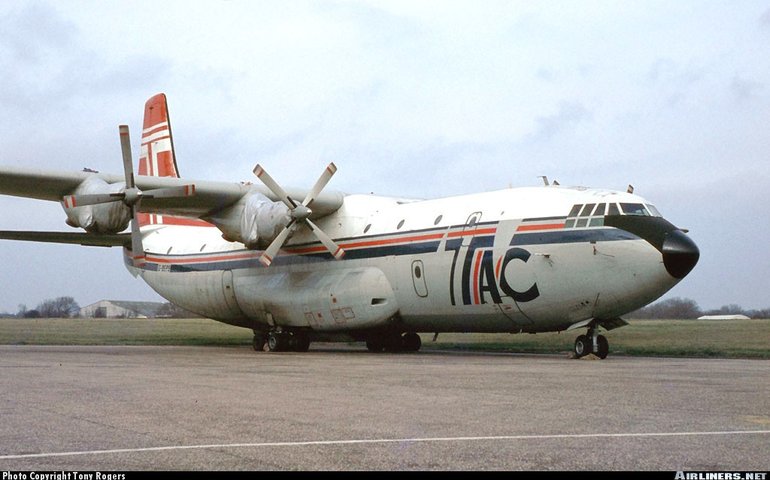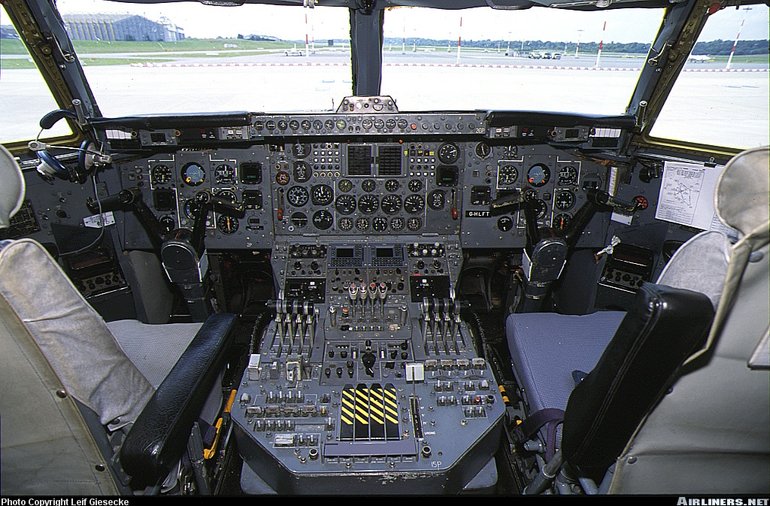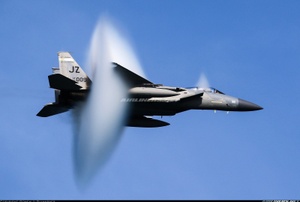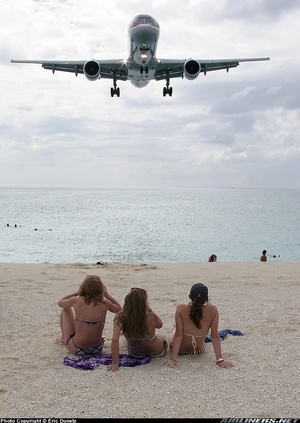Short Belfast
Details
Country of Origin
United Kingdom
Type
Heavy lift turboprop freighter
History
With a maximum takeoff weight of over 100 tonnes (220,500lb), Short's Belfast is one of the largest turboprop powered aircraft built, behind the massive 250 tonne (551,250lb) max takeoff An-22 (described separately) and Douglas' C133 Cargomaster of the 1950s.
The Belfast was developed in response to a Royal Air Force requirement for a heavy lift freighter capable of carrying a wide range of military hardware, including artillery pieces, 200 plus troops, helicopters and/or guided missiles over relatively long ranges. Short had studied a number of large freighter designs during the late 1950s, and what became the Belfast began life as the SC.5/10, design work on which began in February 1959.
Development of the SC.5/10 design resulted in a first flight of the Belfast on January 5 1964. Design features of this big aircraft included four RollsRoyce Tyne turboprops mounted on a high wing, an 18 wheel undercarriage (comprising two eight wheel main bogeys and two wheel nose undercarriage system) and beaver tail rear loading doors and ramp. When the Belfast entered service with the RAF in January 1966 it was the largest aircraft to be operated by that service.
The Belfast's military career was relatively short lived, and all 10 were retired in 1976. Heavylift (then TAC Heavylift) acquired five Belfasts for commercial service in 1977, and three were placed into service in 1980. Marshall of Cambridge performed a number of modifications on the Belfast which allowed it to be certificated to civil standards on March 6 1980. Since then Heavylift's Belfasts have given the company a useful heavylift capability to carry heavy and awkward sized loads, bettered only by its An-124s. One remained in use in 1998.
Powerplants
Four 4275kW (5730shp) RollsRoyce Tyne RTy 12 turboprops driving four blade constant speed propellers.
Performance
Max cruising speed 566km/h (306kt), typical cruising speed 510km/h (275kt). Service ceiling 30,000ft. Range with max payload and reserves approximately 1575km (850nm), range with 10 tonne (22,000lb) payload 6200km (3350nm), range with max fuel and reserves 8530km (4605nm).
Weights
Operating empty 59,020kg (130,000lb), max takeoff 104,325kg (230,000lb). Max payload 34,000kg (75,000lb).
Dimensions
Wing span 48.41m (158ft 10in), length 41.58m (136ft 5in), height 14.33m (47ft 0in). Wing area 229.1m2 (2466sq ft).
Capacity
Flightcrew of three or four comprising two pilots, a flight engineer and possibly a navigator. Can accommodate a wide variety of oversize and heavy cargoes such as heavy machinery, industrial equipment such as generators and small aircraft and helicopters.
Production
Only 10 Belfasts built specifically for the UK's Royal Air Force. One remains in commercial service with Heavylift in 1998 (none are in military service).
Related Links
Short Belfast
The backbone of this section is from the The
International Directory of Civil Aircraft by Gerard Frawley
and used with permission. To get your own copy of the book
click here.




















